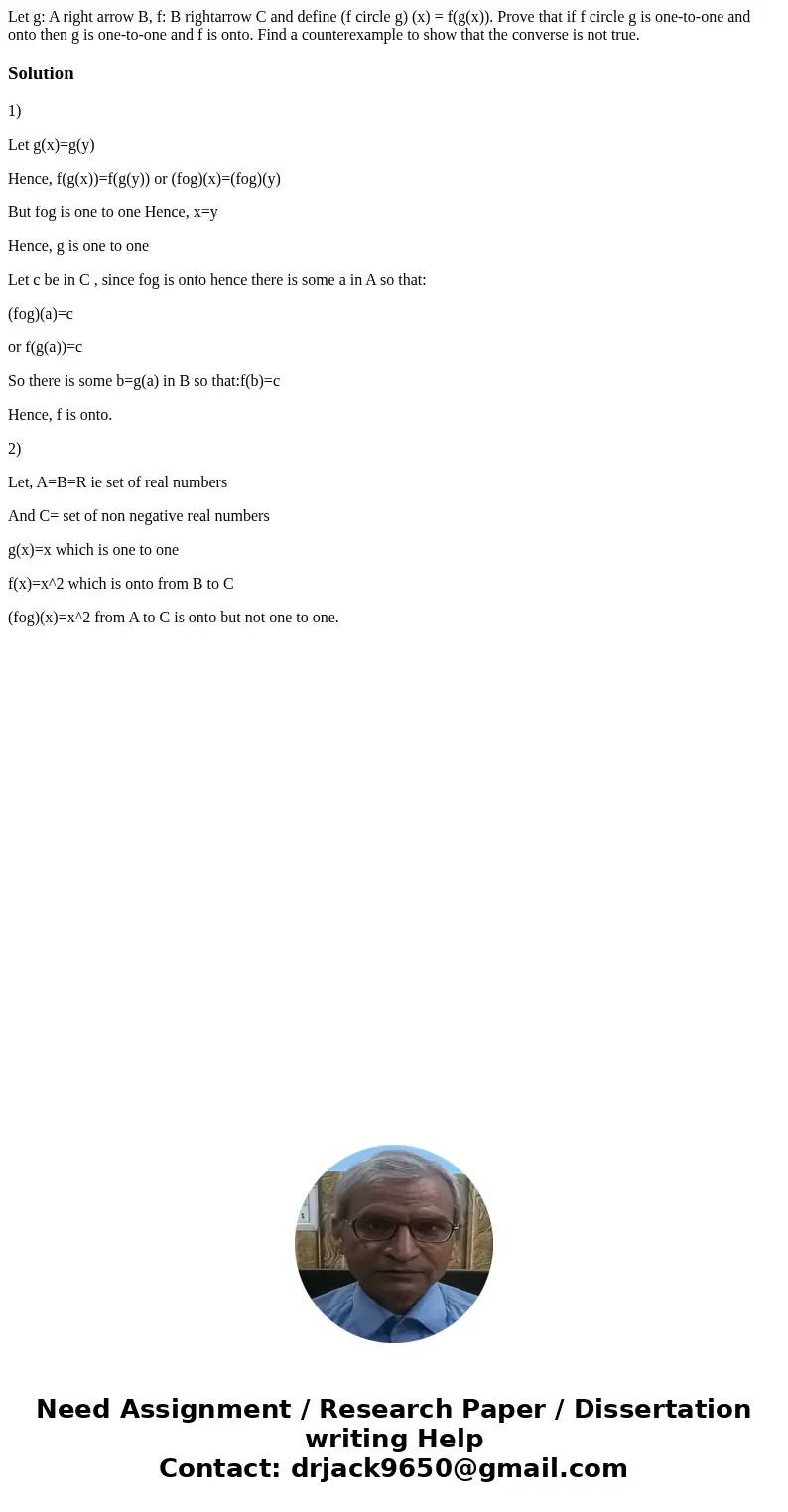Let g A right arrow B f B rightarrow C and define f circle g
Let g: A right arrow B, f: B rightarrow C and define (f circle g) (x) = f(g(x)). Prove that if f circle g is one-to-one and onto then g is one-to-one and f is onto. Find a counterexample to show that the converse is not true.
Solution
1)
Let g(x)=g(y)
Hence, f(g(x))=f(g(y)) or (fog)(x)=(fog)(y)
But fog is one to one Hence, x=y
Hence, g is one to one
Let c be in C , since fog is onto hence there is some a in A so that:
(fog)(a)=c
or f(g(a))=c
So there is some b=g(a) in B so that:f(b)=c
Hence, f is onto.
2)
Let, A=B=R ie set of real numbers
And C= set of non negative real numbers
g(x)=x which is one to one
f(x)=x^2 which is onto from B to C
(fog)(x)=x^2 from A to C is onto but not one to one.

 Homework Sourse
Homework Sourse